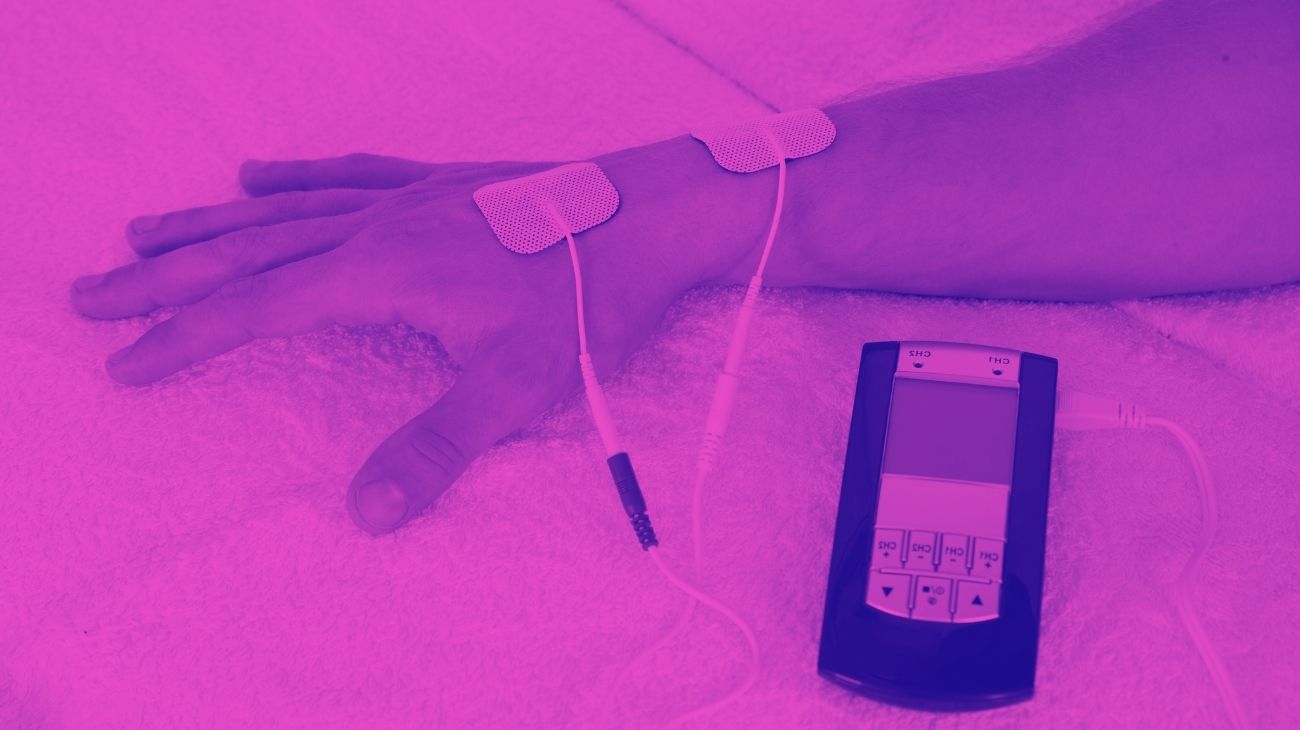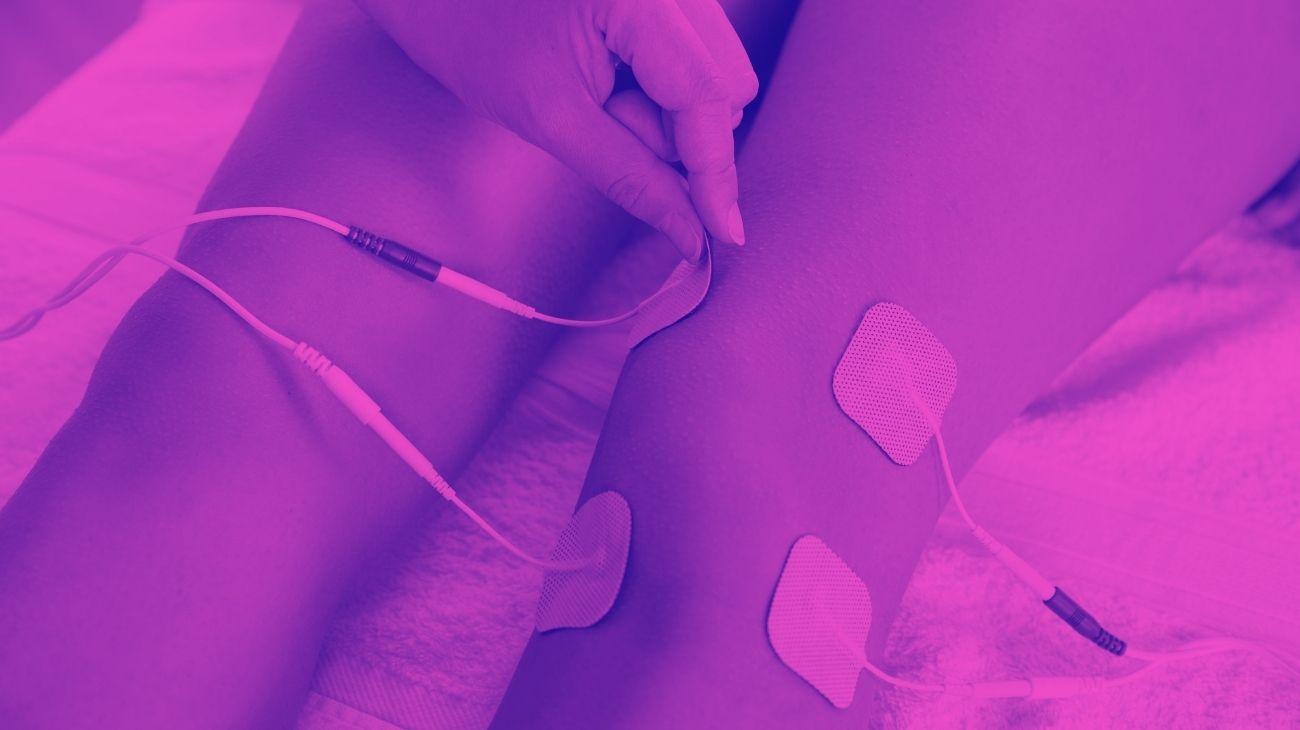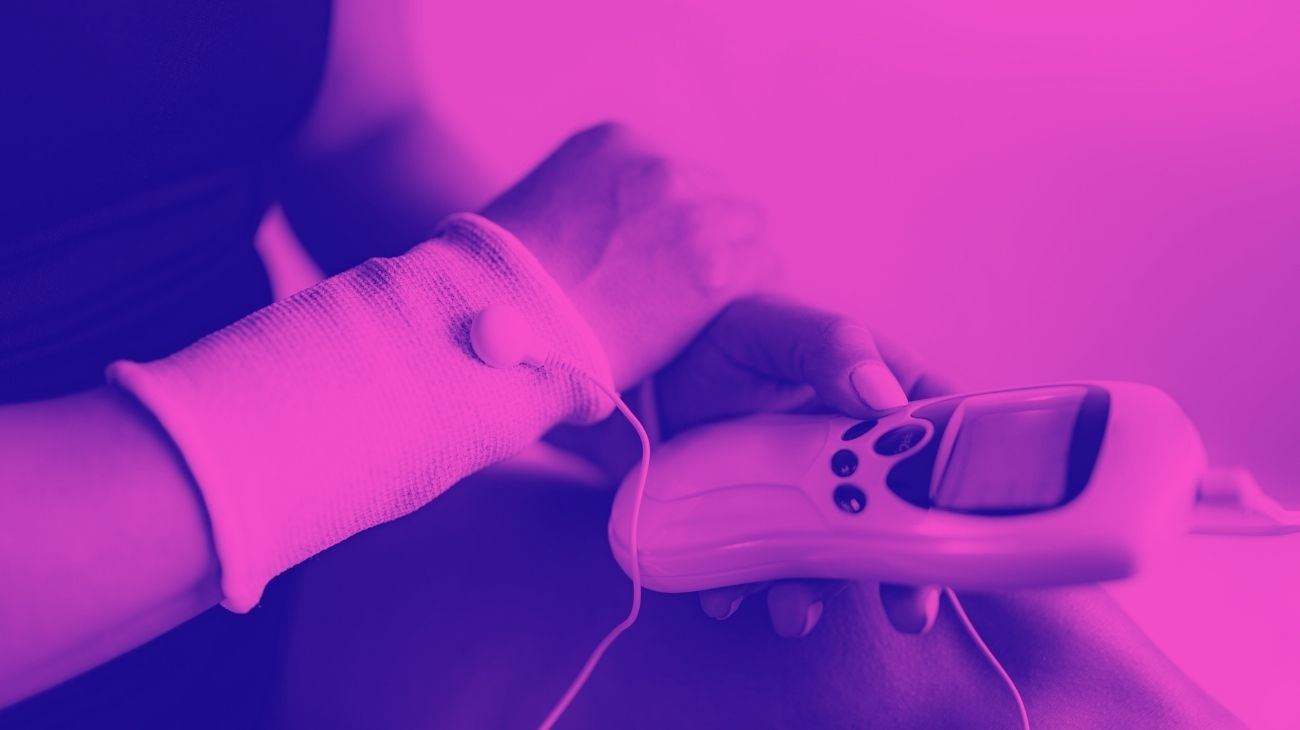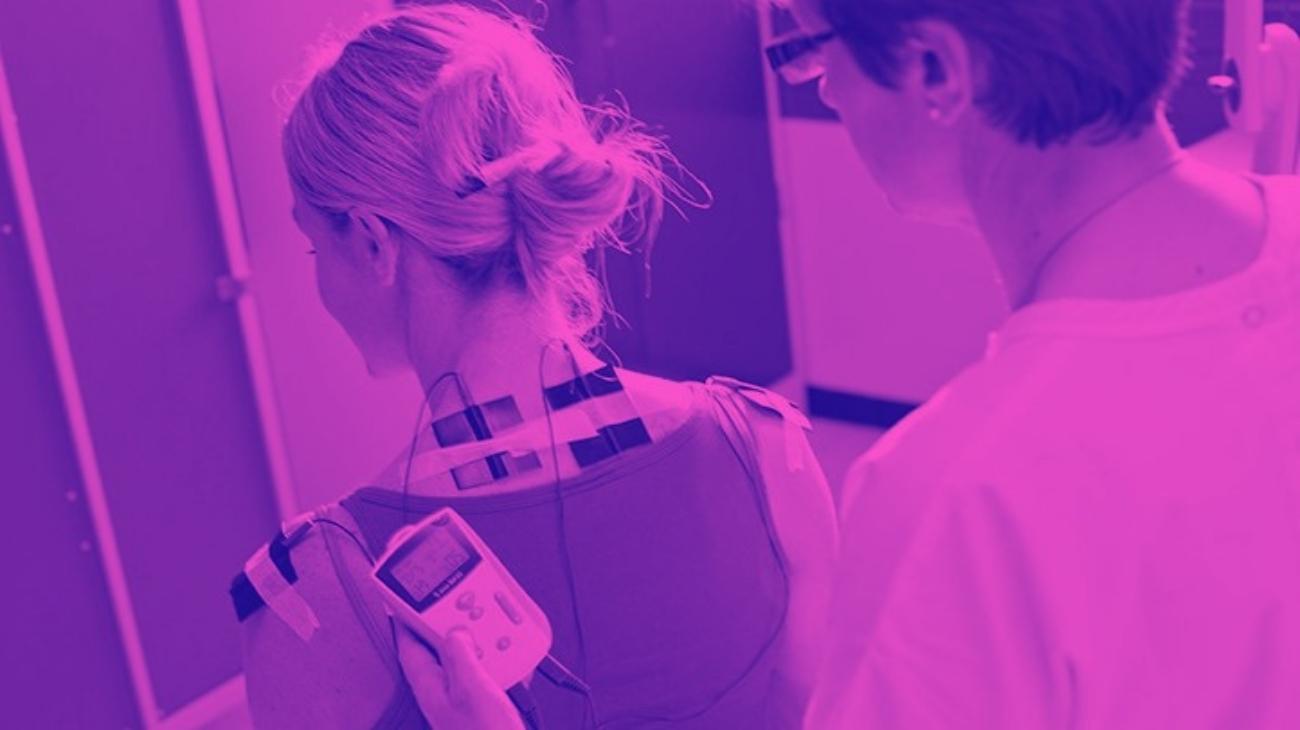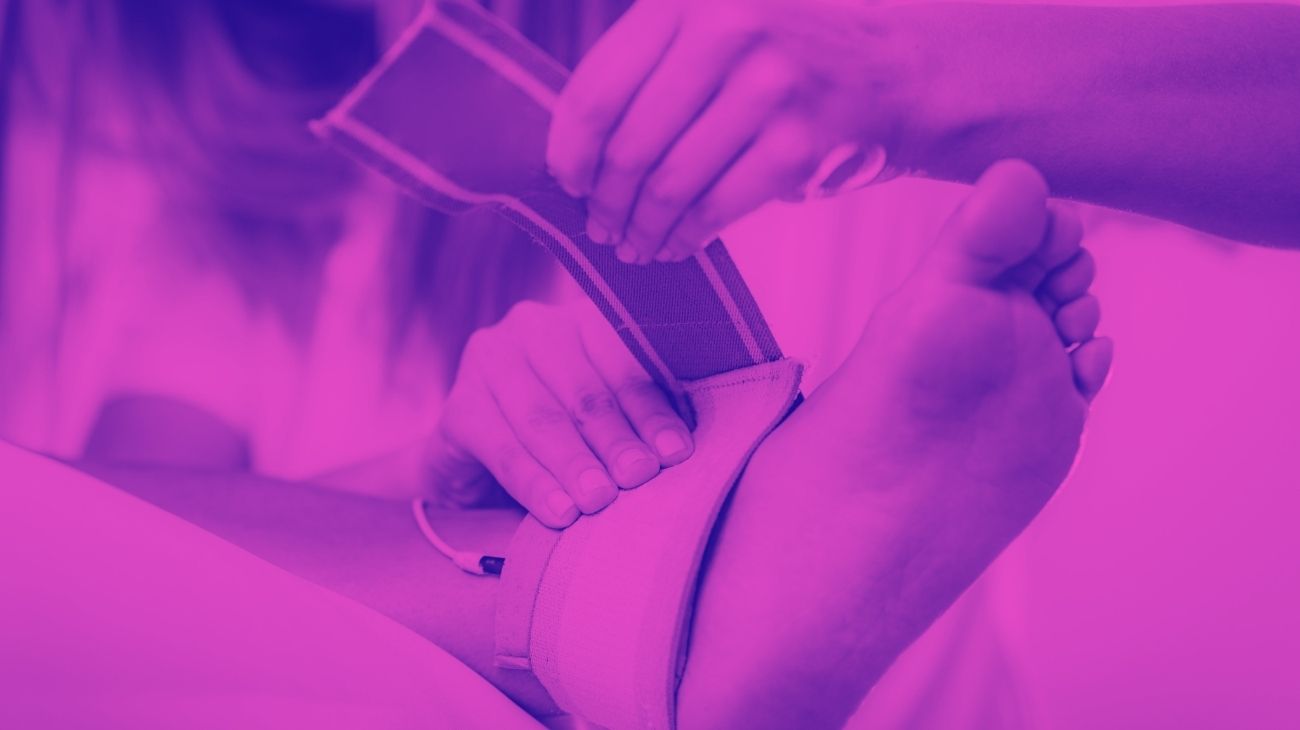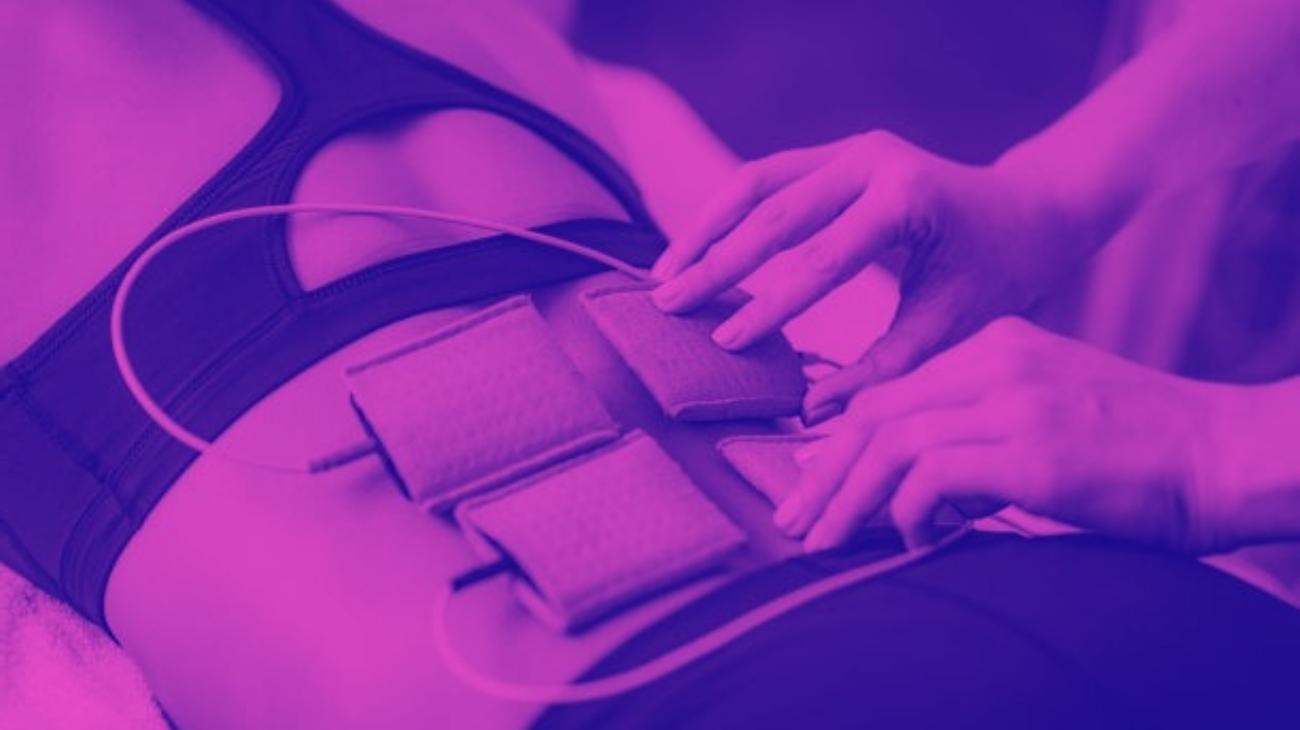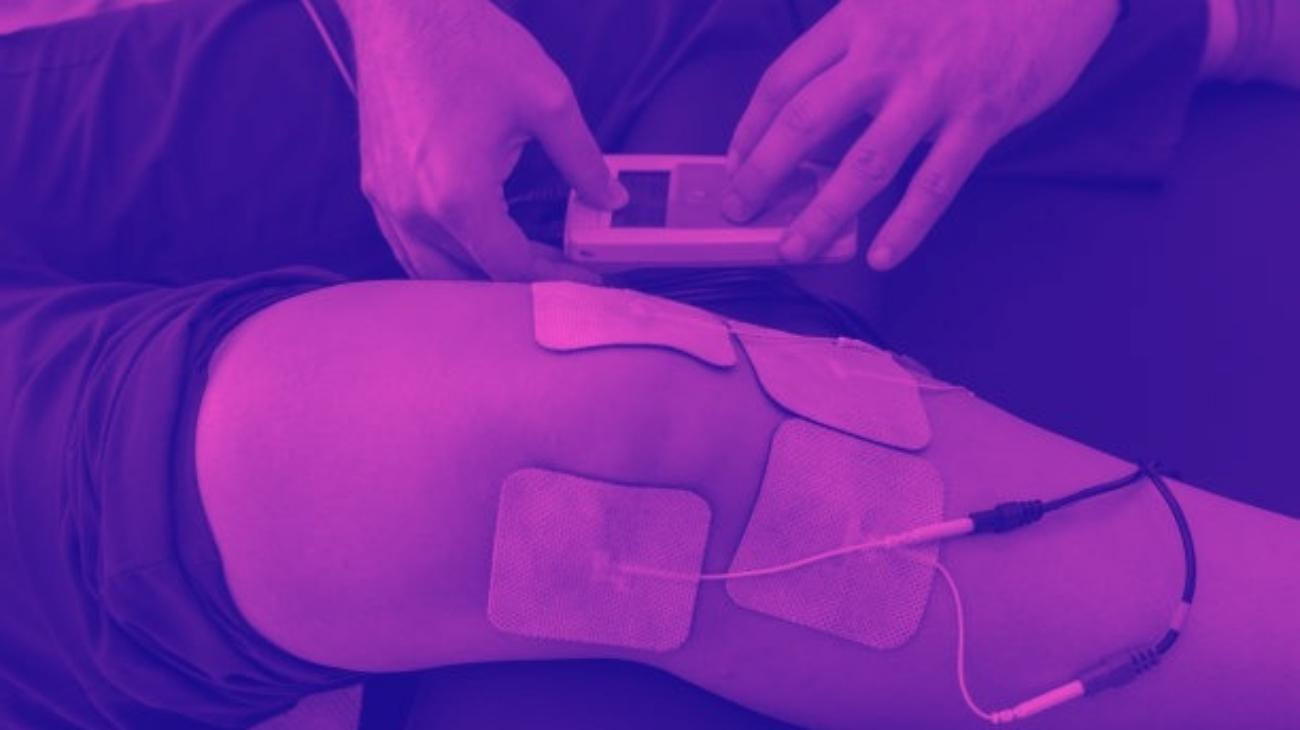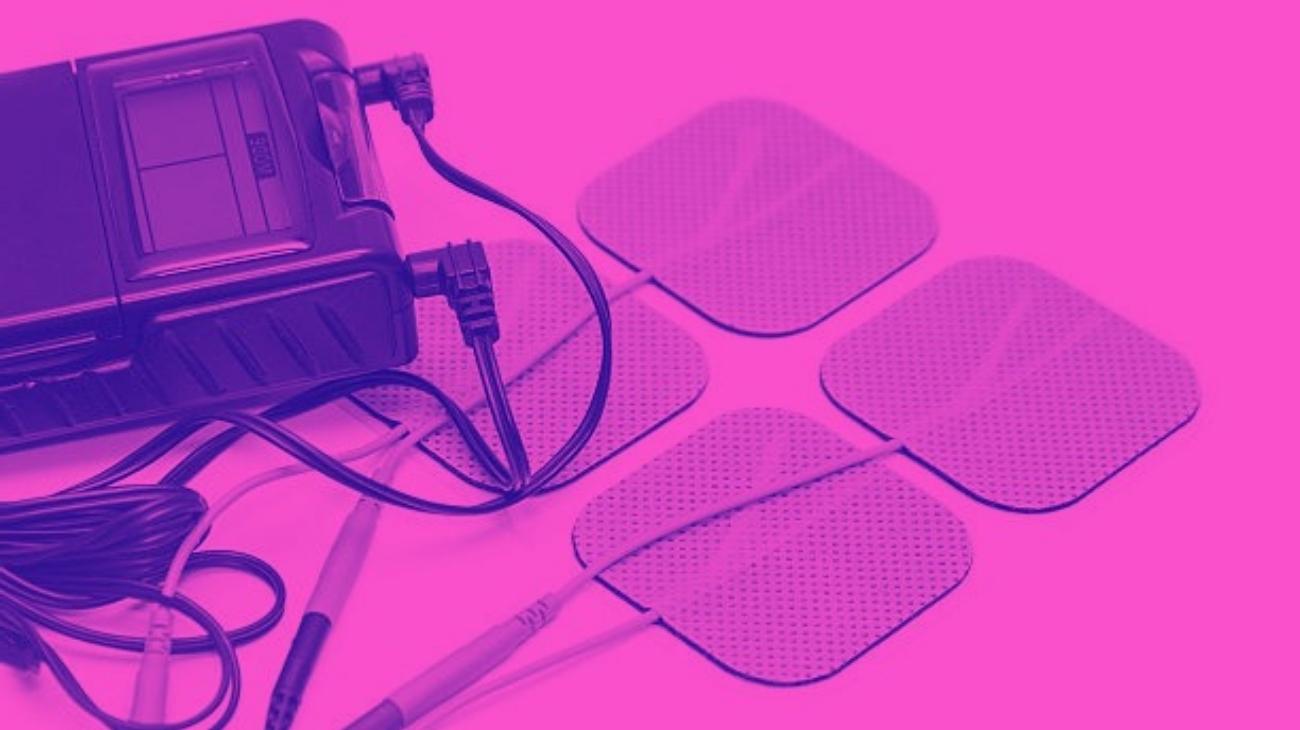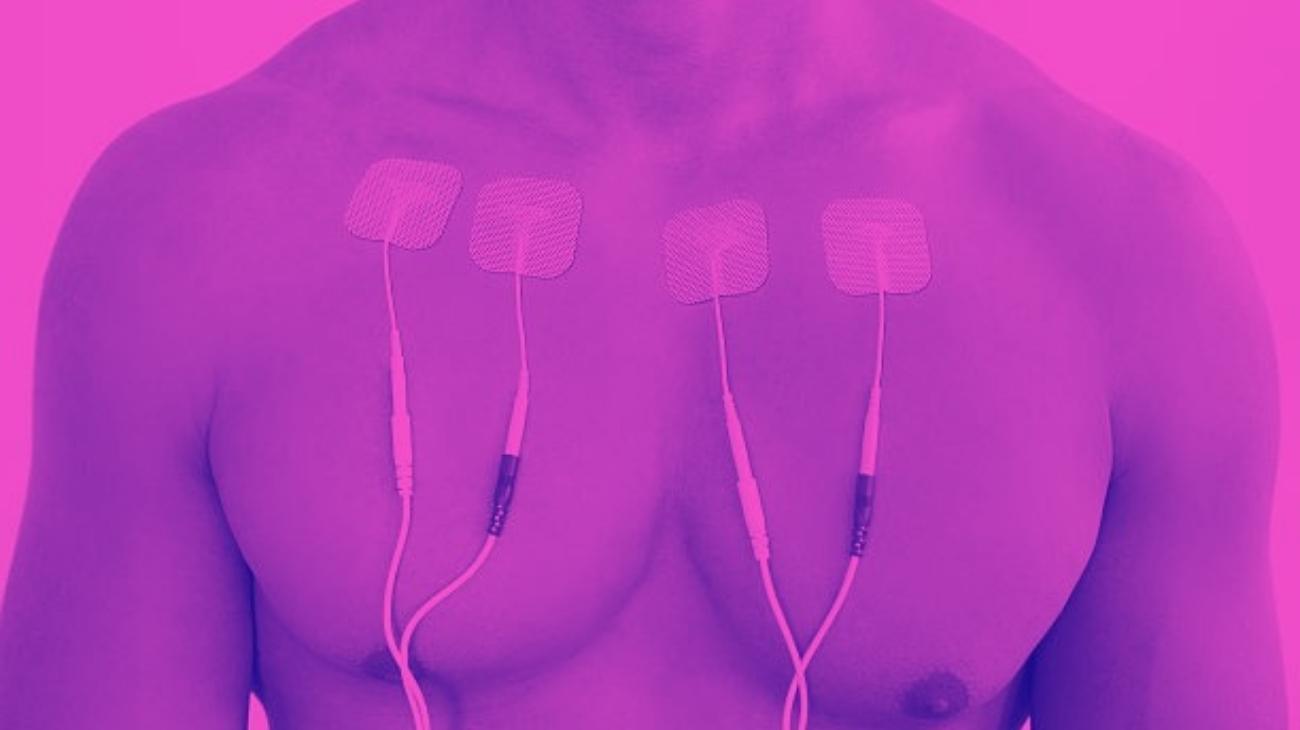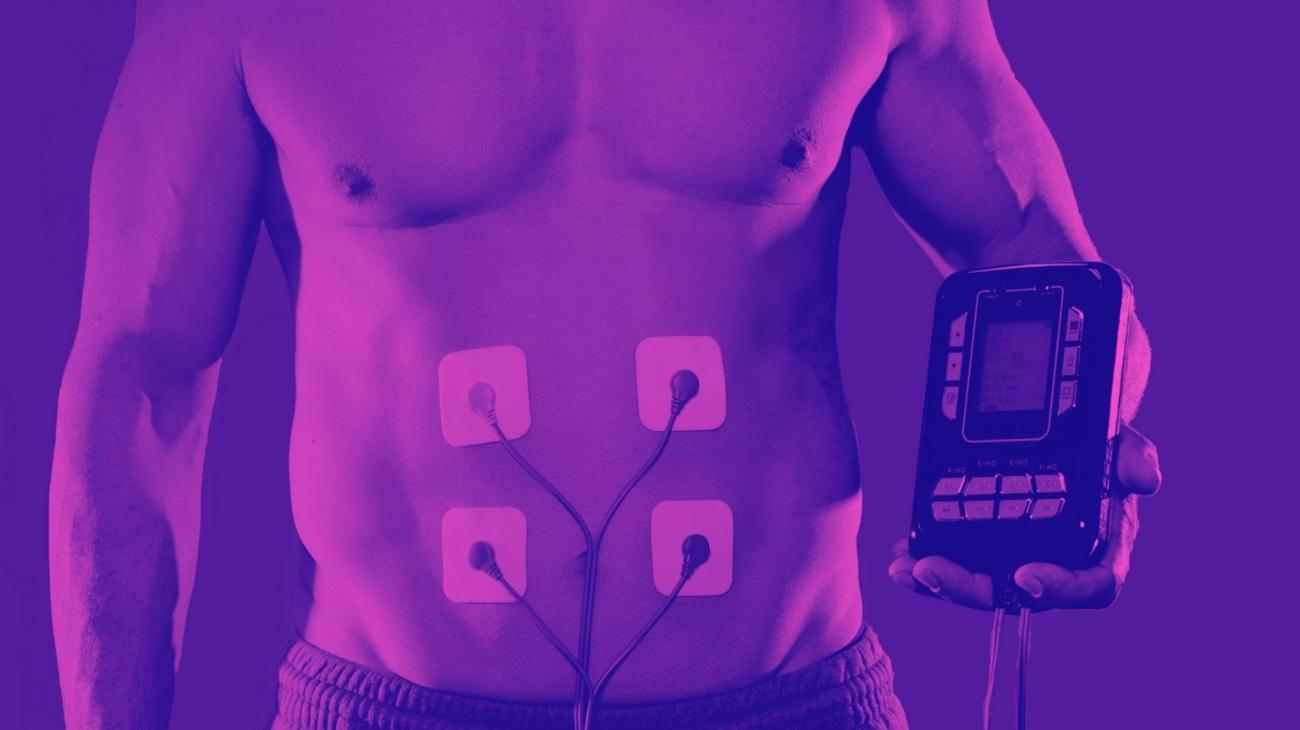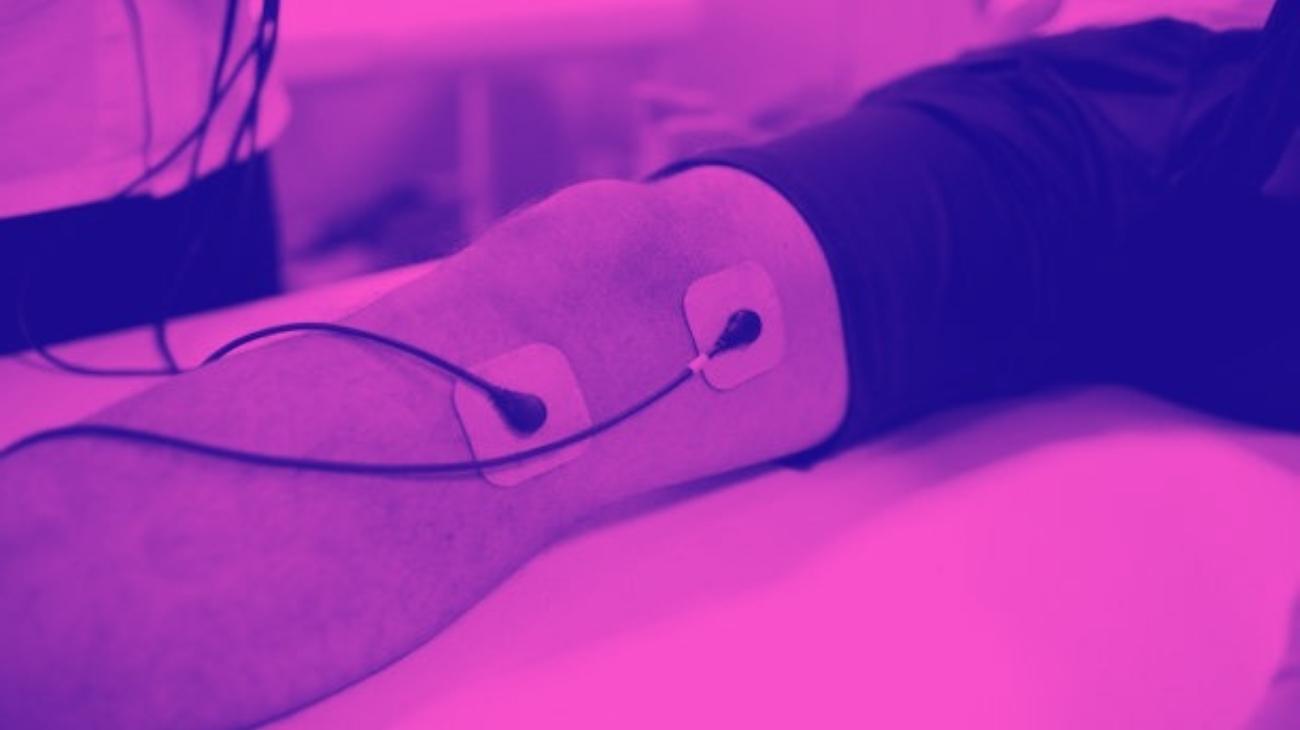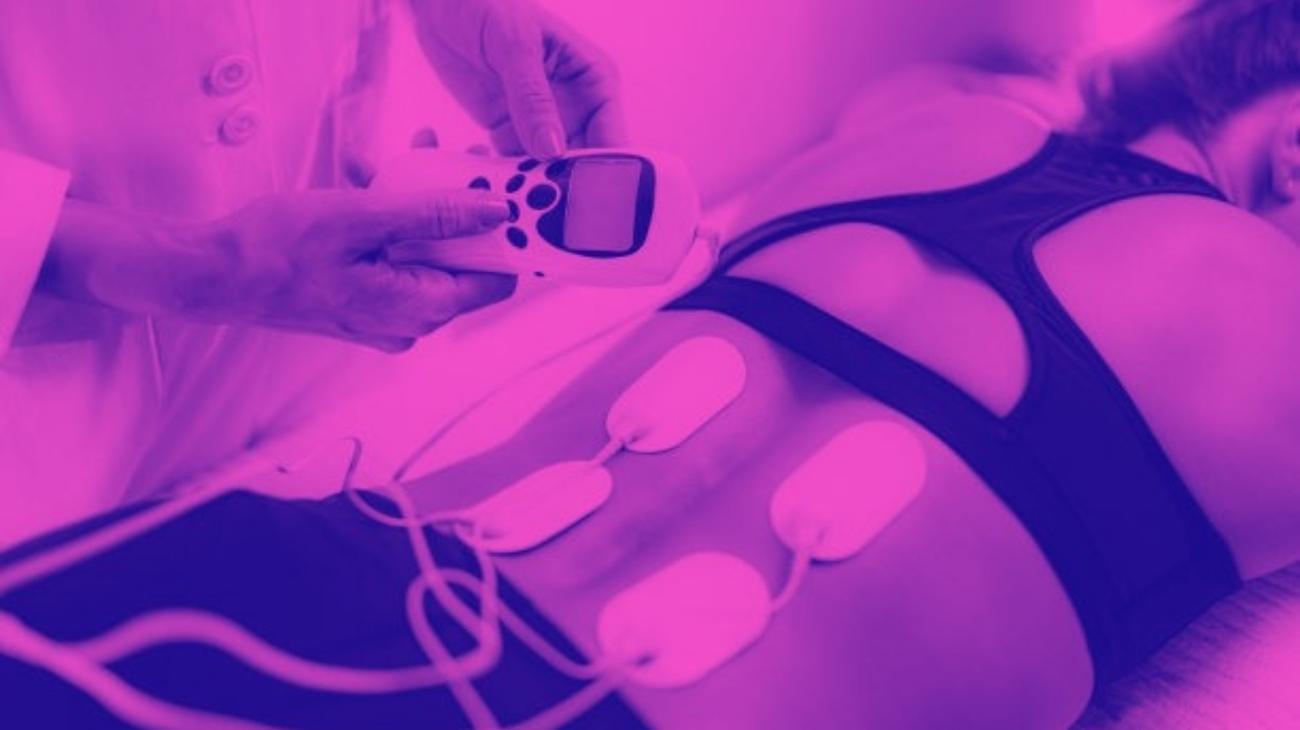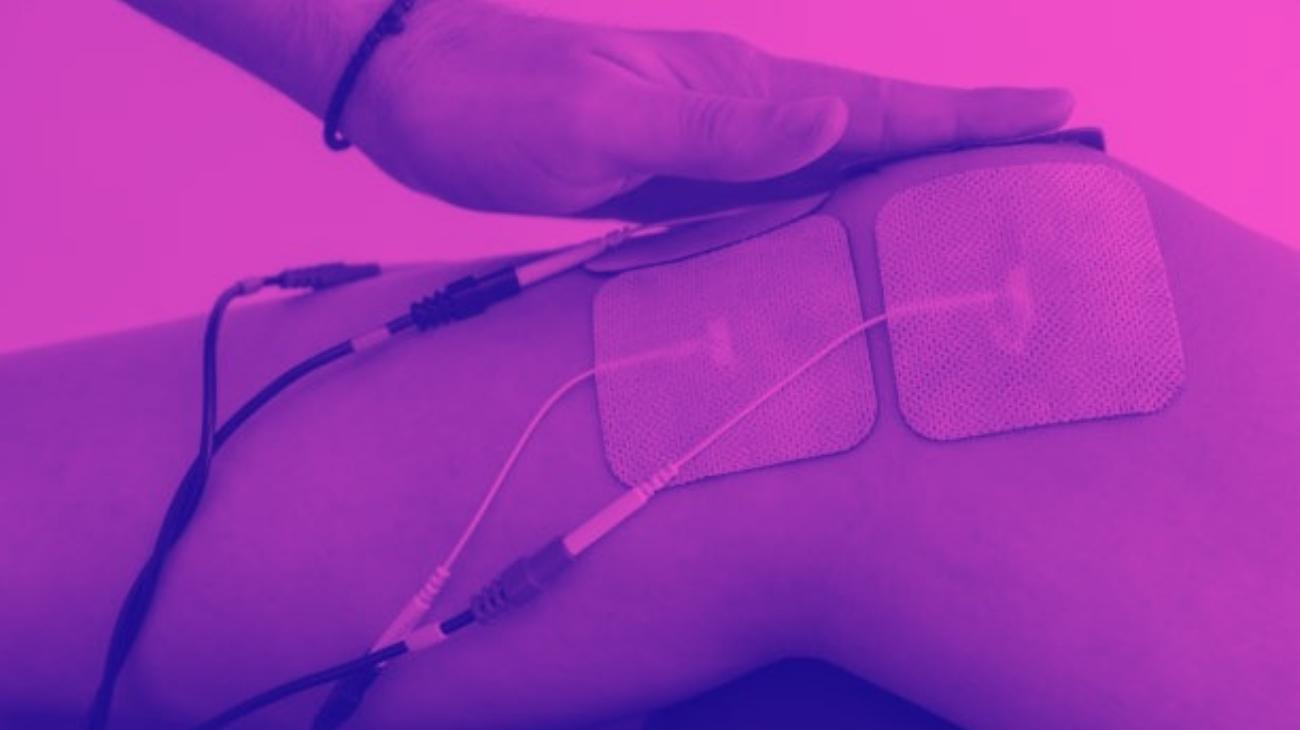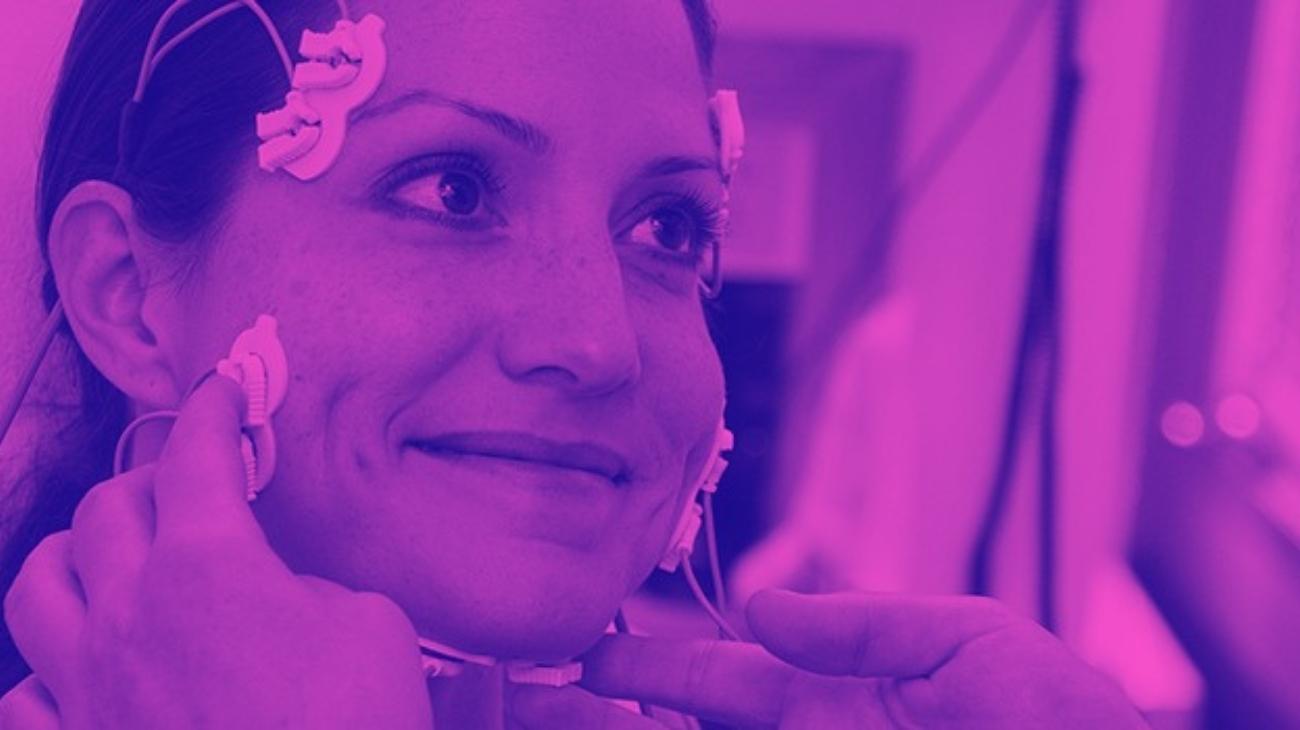- How to use TENS machines to relieve shoulder tendon injury pain?
- Best TENS units to treat rotator cuff tears
- How to use EMS to strengthen muscles and prevent a shoulder injury?
- Best EMS machines to prevent shoulder tendon tears
- Video: How to place the electrodes pads on the shoulder?
- More types of EMS stimulators and TENS machines you should know about
- What is a rotator cuff tear and what are the causes?
- What are the most common types of shoulder injuries?
- Differences between TENS and EMS: Which is better for treating rotator cuff tears?
- Contraindications in the use of electrodes and electrotherapy
The shoulder joint is one of the main responsible for the mobility of the arm, being the rotator cuffs responsible for keeping the joint stable within its range of motion, so certain movements can put excessive stress on this group of muscles and tendons.
TENS and EMS electrostimulation therapies are among the most commonly used options for the treatment of general pain so, below, we will show you how to apply these therapies to the shoulder and rotator cuff area, in order to treat ailments caused by injuries to this muscle.
How to use TENS machines to relieve shoulder tendon injury pain?
The practical use of TENS units requires some knowledge of anatomy in order to position the electrodes on the correct areas as well as knowledge of how each device works, which is why we will teach you the correct position to treat rotator cuff injuries, and what current to program into your TENS device for optimal treatment.
Where to place the electrodes?
The positioning of the electrodes follows a fairly simple process, and it is necessary that most of the pads are located over the branches of the suprascapular nerve and other nerve branches, which means that the ideal positions are as follows:
- Over the boundary between the trapezius and deltoid muscle, where the supraclavicular nerve is located.
- Along the anterior, lateral and posterior deltoids, in order to interact with the circumflex nerve.
- On the posterior aspect of the trapezius, on the upper part of the scapula, where it will act on the suprascapular nerve.
Which current to use?
A rotator cuff tear is an injury that can produce considerable pain that becomes more intense at night. This type of injury produces acute pain, so the ideal frequency for treatment is between 90 and 120 Hz. On the other hand, chronic pain caused by more severe muscle injuries requires a lower intensity, which can range from 2 to 10 Hz.
Muscle tears rarely become chronic pain, as their average healing time is 8 to 10 days for minor injuries, while moderate injuries can take four to six weeks.
Best TENS units to treat rotator cuff tears
The use of TENS electrotherapy devices is dedicated both to the treatment of pain caused by sports injuries and to the relief of symptoms of chronic ailments and diseases. In the particular case of rotator cuff pain treatment, the best devices you can choose are the following:
- Type: Combo
- Channels: Dual
- Modes/Programs: 24 Modes
- Intensity: 20 Levels
- Wireless: Yes
- Heat Therapy: No
- Battery: Lithium Rechargeable (up to 24 hours)
- Electrodes: 8 Pads
- Display: Digital
- Size: Not specified
- TENS+EMS Combo
- Long battery life (up to 24 hours)
- Portable and small size
- Improves joint mobility
- Improves blood circulation
- Does not specify measurements and weight
- Does not include touch screen
- Some electrodes dry quickly
It has 20 intensity levels and a dual current output function, which will allow you to program different modes of use in each of its electrodes allowing you to treat different areas of the body simultaneously. Its electrodes are reusable and hypoallergenic, and it has a timer that can be adjusted between 10 and 60 minutes.
- Type: Combo
- Channels: Dual
- Modes/Programs: 21 Modes
- Intensity: 40 Levels
- Wireless: Yes
- Heat Therapy: No
- Battery: 3 AAA Batteries
- Electrodes: 8 Pads
- Display: Digital
- Size: 4.33" x 2.17" x 0.79" - 0.52 lbs
- Portable and small size
- Reduces pain symptoms
- Improves joint mobility
- Includes user manual
- TENS+EMS Combo
- Battery operated
- Does not include carrying bag
- Touch screen not included
It has 21 modes of use and 40 intensity levels that allow it to treat different types of pain in different parts of the body. It has a dual output function, so you can treat two areas of the body simultaneously. All these features make this unit the best choice if you suffer from chronic ailments or caused by rheumatic diseases, providing a feeling of immediate relief and a great resistance to pain.
- Type: TENS
- Channels: Dual
- Modes/Programs: 5 Modes
- Intensity: 10 Levels
- Wireless: Yes
- Heat Therapy: No
- Battery: Rechargeable Battery
- Electrodes: 4 Pads
- Display: Digital
- Size: 8.8" x 2" x 7.8" - 1.15 lbs
- Includes user manual
- Prevents muscle atrophy
- Accelerates recovery from sports injuries
- Includes carrying bag
- Reduces pain symptoms
- Non-universal electrode replacements
- Not suitable for muscle hypertrophy
- Few types of programs
The TENS 7000 muscle stimulator includes one of the most complete electrical stimulation therapy packages you will find. It includes 1 TENS 7000 unit, 2 guide cables, 4 packs of reusable pads, 1 9-volt battery, 1 instruction manual and a hard case to carry your electrostimulation equipment wherever you want.
- Type: TENS
- Channels: 4
- Modes: 24 Programs
- Intensity: Not specified
- Wireless: No
- Heat therapy: No
- Battery: Rechargeable
- Electrodes: 8 Pads
- Display: LCD
- Size: Not specified
- 4 independent channels
- Provides cramp relief
- Portable Device
- Promotes tissue healing
- 24 programs
- Few electrodes
- Does not specify battery life
- Does not specify intensity and size
It has 24 clinically proven massage programs, which are divided into 12 TENS therapy programs and 12 muscle stimulation training modes. It has a long-life rechargeable lithium battery that will give you a great autonomy of several hours of continuous use, eliminating the extra cost of buying replacement cylindrical batteries.
- Type: TENS
- Channels: -
- Modes/Programs: 3 Programs
- Intensity: 20 Levels
- Wireless: Yes
- Heat therapy: No
- Battery: 6 AAA Batteries
- Electrodes: 2 Pads
- Display: No display
- Size: 2.36" x 2.08" x 0.7" - 0.09 lbs
- Portable and small size
- Reduces pain symptoms
- Improves blood circulation
- Wireless electrodes
- Improves joint mobility
- Few types of programs
- Not suitable for muscle hypertrophy
- No display included
The package includes 1 wireless remote control operating on AAA batteries 2 electrode control units, 2 reusable gel pads and an instruction manual. The ergonomic and compact design of the pads allows them to be used anywhere on the body, and they are discreet enough to be worn under clothing. It has 3 modes of use and 20 levels of intensity designed for safe and fast pain relief.
How to use EMS to strengthen muscles and prevent a shoulder injury?
Despite the fact that the main purpose of EMS therapy is not the treatment of injury symptoms, its use is widely spread in sports such as swimming, boxing and weightlifting, as it is quite an effective method of training shoulder muscles.
Where to put the electrodes?
To improve the results of physical training, it is necessary to know how to position the electrodes on the right muscles in order to increase the strength and endurance of the shoulders, both to improve their aesthetics and to increase their endurance and performance.
The ideal muscle zones to position the electrodes are as follows:
- Trapezius muscle, at the junction between shoulder and neck.
- Posterior deltoid, located on the posterior aspect of the shoulder.
- Lateral deltoid, on the lateral aspect of the shoulder.
- Anterior deltoid, visible on the front of the joint.
In addition, there are other muscle groups adjacent to the shoulders, specifically over the scapula, that enable their movement and increase their stability, so they should be taken into account for comprehensive shoulder training. These are:
- Infraspinatus muscle, in the center of the scapula.
- Greater teres major muscle, just below the infraspinatus muscle.
- Teresminor muscle, near the axilla.
- Latissimus dorsi, in the lower part of the scapula.
What intensity to use?
According to studies conducted by the Journal of Sport Science and Medicine, strength training by EMS becomes much more effective when currents greater than 50 Hz are applied, resulting in an optimal average of 85 Hz.
However, it has been shown that the use of currents between 20 and 30 Hz can provide very similar results when applied to small muscle groups such as the deltoid muscles.
Best EMS machines to prevent shoulder tendon tears
Strengthening the musculature of the shoulder joint is vital for stability and, consequently, prevention of shoulder injuries. Therefore, it is necessary to select the right devices in order to obtain the best possible results.
- Type: Combo
- Channels: 4
- Modes/Programs: 6 Programs
- Intensity: Not specified
- Wireless: No
- Heat Therapy: No
- Battery: Rechargeable Lithium (8 hours)
- Electrodes: Not specified
- Display: LCD
- Size: Not specified
- Improves joint mobility
- Improves blood circulation
- Accelerates recovery from sports injuries
- TENS+EMS Combo
- Long battery life (up to 8 hours)
- Does not specify intensity levels
- Measurements and weight not specified
- 6 programs
It has a powerful rechargeable lithium battery that gives it an autonomy of up to 8 continuous hours, and 6 programs of use that are divided into 1 warm-up program, 3 programs for increasing output, 1 recovery program and 1 TENS program. It is one of the most complete options to improve physical performance and recovery.
- Type: Combo
- Channels: -
- Modes/Programs: 24 Modes
- Intensity: 20 Levels
- Wireless: Yes
- Heat Therapy: No
- Battery: Rechargeable Lithium
- Electrodes: 3 Pads
- Display: No Display
- Size: 6.5" x 3" - 8.6" x 3"
- Wireless electrodes
- Control from mobile app
- Prevents muscle atrophy
- Reduces pain symptoms
- TENS+EMS Combo
- No weight specified
- Battery life not specified
- Non-universal electrode replacements
Its 20 preset massage modes, in conjunction with its 24 intensity levels, offer the best and most complete massage experience available for pain relief, and its butterfly-shaped design and flexible and adaptable material will allow you to easily position the electrodes anywhere on the body. In the package you will find 1 VPOD unit, 2 medium reusable gel electrodes and 1 large reusable gel electrode, along with a carrying case that allows you to take it anywhere.
- Type: Combo
- Channels: -
- Modes/Programs: 6 Modes
- Intensity: 20 Levels
- Wireless: Yes
- Heat Therapy: No
- Battery: Rechargeable Lithium
- Electrodes: 1
- Display: -
- Size: Not specified
- Wireless electrodes
- Improves blood circulation
- Accelerates recovery from sports injuries
- TENS+EMS Combo
- Portable and small size
- Battery life not specified
- Does not specify dimensions and weight
- Does not include touch screen
It has 6 automated massage modes, and 20 intensity levels that can be adjusted very easily thanks to its two-button control system. Its long-lasting rechargeable lithium battery allows it to operate for several hours and has a timer to program sessions from 10 to 60 minutes.
- Type: Combo
- Channels: 4
- Modes: 24 Programs
- Intensity: 30 Levels
- Wireless: No
- Heat therapy: No
- Battery: Rechargeable (20 hours of use)
- Electrodes: 10 Pads
- Display: Digital
- Size: Not specified
- Includes carrying bag
- With 30 intensity levels
- 24 modes
- With 10 pads
- Timer option
- No heat therapy
- No size specified
It has 24 modes of use and 30 intensity levels that you can program individually on each of its 4 channels, so you can apply them to different parts of the body, or even different people, simultaneously. Its high-powered battery will allow you to apply electrostimulation for 20 continuous hours, and is fully rechargeable through the current or from a USB charger.
- Type: Combo
- Channels: Dual
- Modes/Programs: 24 Modes
- Intensity: Not specified
- Wireless: Yes
- Heat Therapy: No
- Battery: Rechargeable Lithium (up to 22 hours)
- Electrodes: 10 Pads
- Display: Digital
- Size: Not specified
- Includes user manual
- Includes carrying bag
- Improves blood circulation
- Reduces pain symptoms
- TENS+EMS combo
- Touch screen not included
- Does not specify measurements and weight
- Does not specify intensity levels
Its mode of use is incredibly easy, as the modes of use can be adjusted by pressing a few buttons, and the integrated timer will allow you to program the start and end of the session automatically. It is one of the safest forms of pain treatment, as it does not require medication or invasive processes to generate the sensation of relief, since it works by stimulating the body's natural painkillers.
Video: How to place the electrodes pads on the shoulder?
Electrodes for shoulder
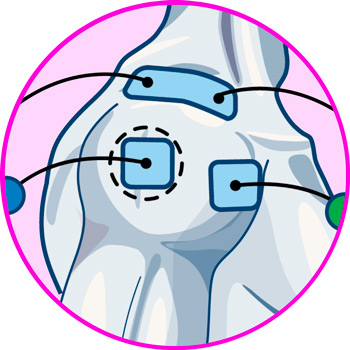
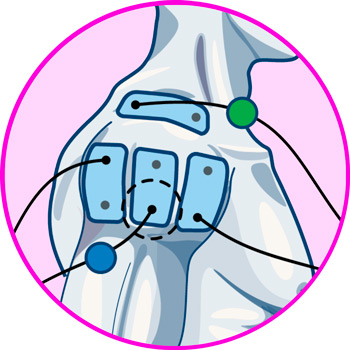

More types of EMS stimulators and TENS machines you should know about
What is a rotator cuff tear and what are the causes?
Rotator cuff tears occur when the muscles and tendons that make up this section of the shoulder become overloaded, causing excessive strain or a tear in the muscle fibers, causing severe pain and making it impossible to move the shoulder.
This injury can occur for several reasons, among which we can highlight the following:
- Falls: a fall on the outstretched arm can strain the shoulder enough to tear the rotator cuff tendons
- Overuse: A sudden jerk while trying to lift something heavy can cause injury to the shoulder muscles
- Age: Starting at age 40, the rotator cuff muscles and tendons wear out, making them more vulnerable to injury.
- Conditions: Problems such as chronic tendonitis or impingement syndrome can increase the likelihood of rotator cuff injury.
What are the most common types of shoulder injuries?
Although the shoulder joint is one of the most mobile joints in the body, its structure makes it somewhat unstable, so the upper part of the humerus must be anchored to the shoulder socket by the muscles tendons and ligaments that make up the rotator cuff.
Because of this intrinsic instability, the shoulder can suffer a variety of injuries, among which we can highlight:
- Dislocations: this injury is caused by the separation of the head of the humerus from the glenoid socket of the scapula, which occurs when stress is placed on the shoulder such that the joint between the bones gives way, and can occur as a result of sports injuries, falls and seizures.
- Sprains: is an overstretching of the coracohumeral, glenohumeral and trapezoid ligaments, causing partial or total tears that may result in symptoms such as pain, swelling, bruising and motor problems.
- Tendonitis: is the severe inflammation of the tendons, which can cause pain and swelling. In the shoulder joint, the tendon most vulnerable to this condition is the supraspinatus tendon.
- Bursitis: it is the inflammation of one or several of the bursae of the shoulder, which are serous bags that prevent the bones from colliding with each other. The shoulder contains three bursae. The subacromial bursa, subdeltoid bursa and subscapularis bursa. Bursitis can cause inflammation, pain and difficulty moving the shoulder.
- Fractures: is the general breakage of a bone in the joint. The shoulder is made up of three main bones of the shoulder are the humerus, scapula and clavicle. Fractures can cause severe pain, swelling, inability to move and, in the most severe cases, perforation of the skin.
- Arthritis: is inflammation of the joint that occurs naturally due to factors such as age, overweight or family history. It affects all joints and causes pain and stiffness in the joints.
- Rotator cuff tears: it is formed by the supraspinatus, infraspinatus, teres minor and subscapularis muscles. An excessive twisting or an impact with the arm stretched can cause tears in these muscles, generating inflammation, impaired mobility and acute pain.
Differences between TENS and EMS: Which is better for treating rotator cuff tears?
Electrotherapy is one of the most widely used physical rehabilitation methods today, thanks to its interaction with internal tissue. The most commonly used modalities are TENS and EMS therapies, and although both are based on electrical shocks, their modes of operation have crucial differences.
To begin with, TENS (Transcutaneous Electrical Nerve Stimulation) therapy has very distinctive characteristics, among which we can mention:
- It is a technique oriented to the treatment of pain caused by trauma, injuries or diseases that affect certain areas of the body.
- It makes use of electric discharges of variable frequency and low intensity.
- In the case of the shoulder, the discharges interact with the nociceptors located in the sensory branches of the suprascapular nerve.
- Their objective is to generate a sensation of prolonged relief in the patient.
On the other hand, we have the Electro Muscle Stimulation (EMS) therapy which is focused on physical training and rehabilitation from a different approach, which can be summarized in the following characteristics:
- Its high intensity electrical impulses generate muscle contractions.
- It promotes the growth of new muscle fibers, increasing their volume, strength and elasticity.
- Its use is most commonly seen in medical equipment for highly competitive sports.
- The contractions can be oriented to rehabilitation rather than training, functioning also as muscle massage machines.
The ideal therapy for the treatment of pain caused by rotator cuff injuries is TENS, since the intensity and frequency of its electrical discharges is in the range required to treat pain, while EMS can produce adverse results thanks to the high intensity of muscle contractions.
The use of EMS is not completely contraindicated for rotator cuffs, since although it is not ideal for pain treatment, it is very useful for injury recovery if used with the appropriate intensity and frequency settings, producing a relaxing muscle massage that promotes recovery.











